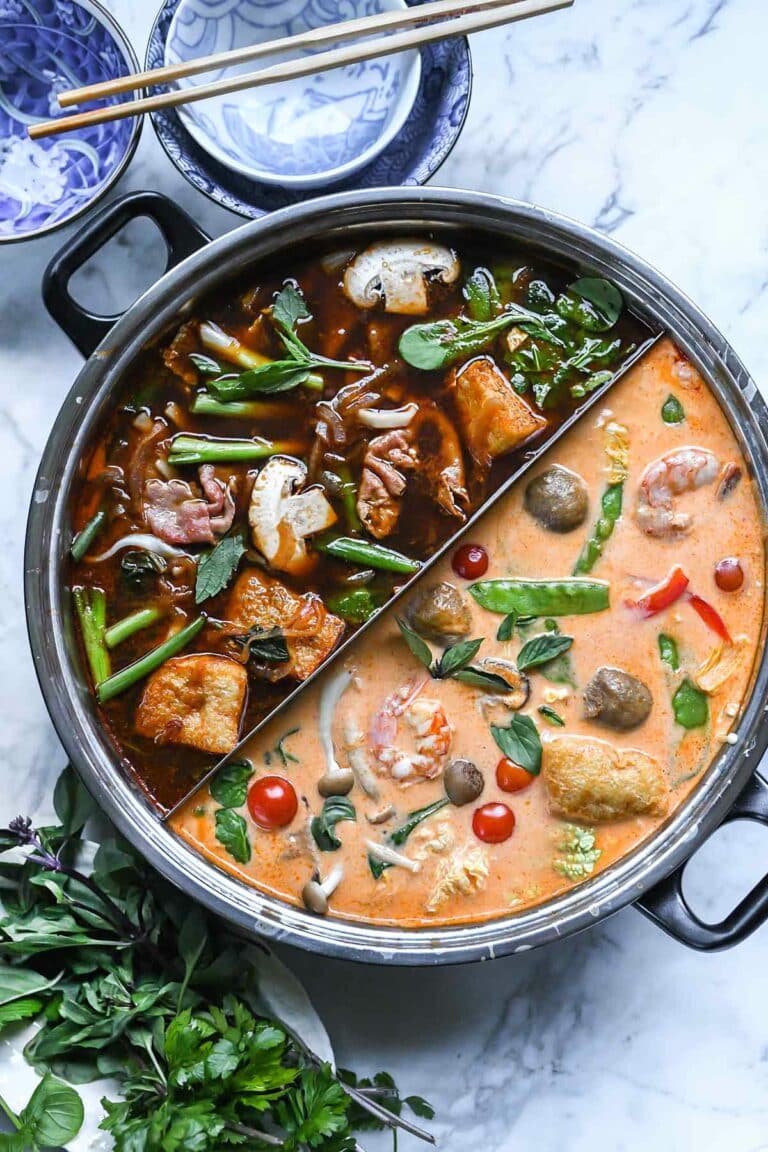This recipe for Asian hot pot, which is simple to make and can be customized, is ideal for making when you have guests around.

The hot pot could be the one easy cooking technique that is used in almost all Asian cuisines. Korean, Vietnamese, Thai, Chinese, Japanese, Mongolian, and more. Fondue and hot pot cookery are comparable. It is shared. It’s going on. It is communal. And for that reason, the hot pot is as ideal for hosting guests as it is for a casual yet enjoyable supper at home, when everyone congregates around the simmering brothy pot and vies for first position with the perfectly cooked shrimp. Additionally, as long as everything fits in the pot, everyone may eat precisely what they want to eat and how much of it they want while using a hot pot.

What Goes in Asian Hot Pot?
A hot pot is made up of several parts, however they are incredibly adaptable.
Here’s the synopsis in brief:
- Broth (chicken, beef, seafood, or veggie)
- Noodles or rice
- Meats/seafood/protein
- Vegetables
- Leafy greens
- Fresh herbs & aromatics (spices and curry paste, garlic, fresh ginger slices, chili oil, Thai basil, scallions, cilantro, lime)
- Sauces for dipping (soy sauce, sesame oil, Thai peanut sauce)
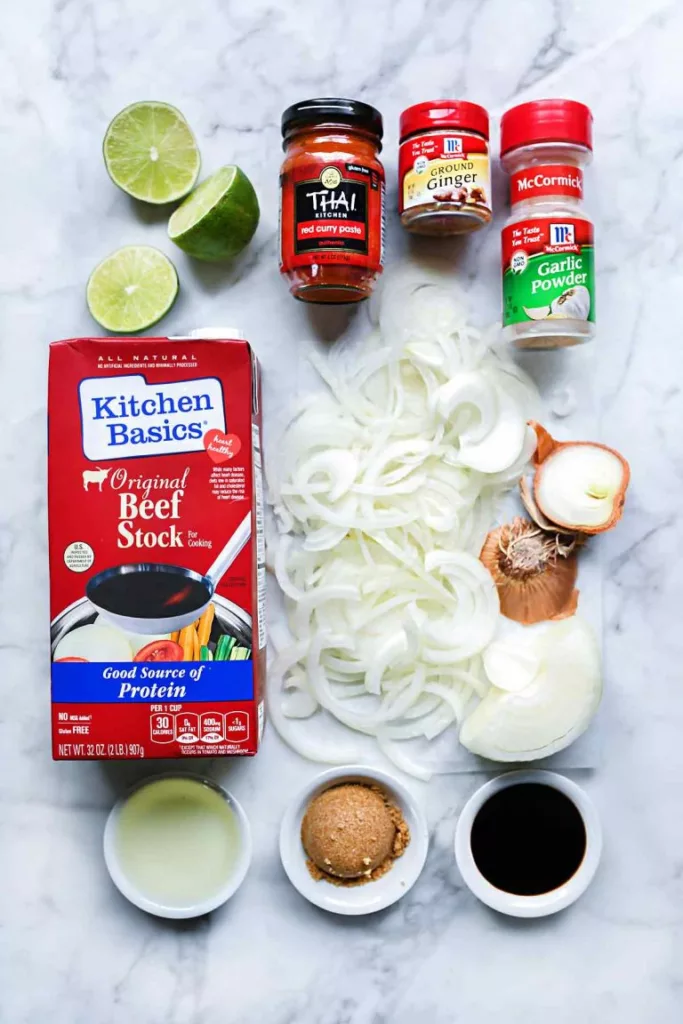
The Best Vegetables for Hot Pot
Here the possibilities are truly endless. All you need to do is consider vegetables that go well with Asian spices to create a wonderful dish.
- greens such as watercress, kale, baby bok choy, spinach, and morning glory Tatsoi, and never raw Napa lettuce
- Any kind of mushroom, including oyster, brown, shiitake, and enoki
- sprouting beans
- Sliced red or delicious yellow onions, such as green onions
- Spicy peppers, or bell peppers
- Avocados
- Quick peas
- Verdant beans
- Baby bamboo, along with the cutest video of a baby eating corn ever
- a tomato
- Carapace
- little new potatoes
- Lime slices, Thai basil, cilantro, and mint are examples of garnishes.
Choosing Rice or Noodles for Hot Pot
The hot pot’s adaptability is what makes it so beautiful. You can choose to use either steaming white rice or noodles as your carb source. Noodles are generally the main attraction at our house. We occasionally use vermicelli noodles, which are thinner and more delicate rice noodles that we use in our Vietnamese chicken curry noodle salad bowl, fresh egg noodles (imagine long strands of Asian-style fettuccine), ramen noodles (spiraled and toothy), and rice noodles similar to what we use for Pho. Using whichever method I choose, I boil the noodles as the broth simmers and set them out in a bowl with the rest of my ingredients.
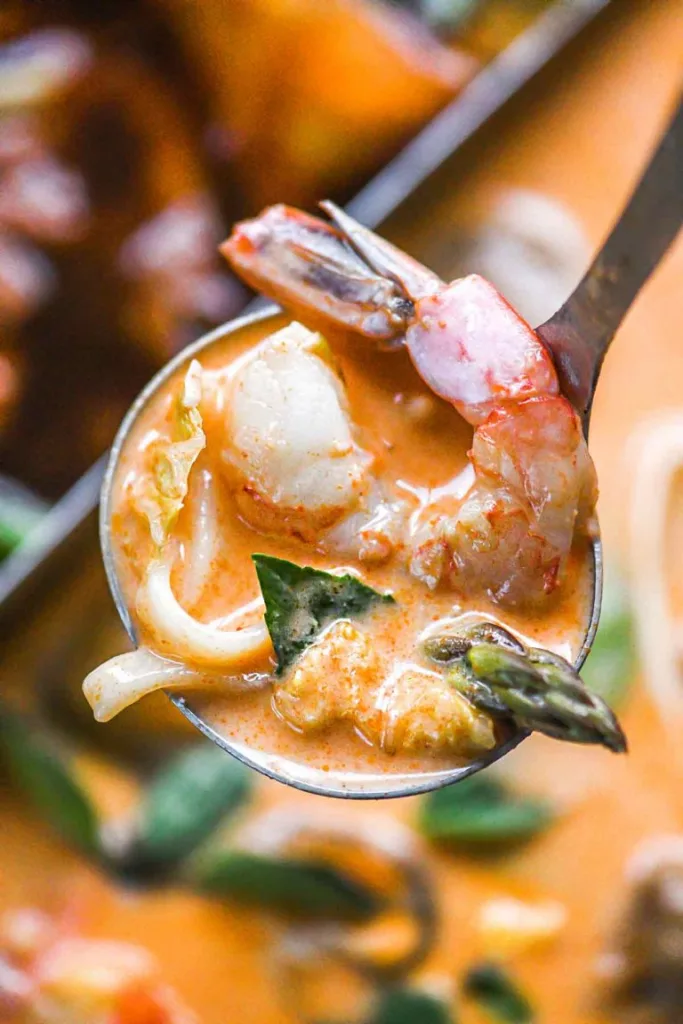
Choosing Your Hot Pot Proteins
There are tons of ideas when it comes to proteins for your hot pot:
- Beef (or pig) cut extremely thinly. This is essentially not negotiable. My Asian grocery has pre-sliced wagyu cuts that cook in around 30 seconds, so I get mine that way.
- If you are slicing the beef yourself, pick a prime, fatty cut such as short ribs or ribeye, then freeze it for fifteen to thirty minutes to make it firmer and simpler to slice as thinly as possible. There’s no need to marinate or season the meat before boiling it in a hot pot (but grilling it is wonderful too!).
- Beef meatballs from Asia. These are often located in the freezer area and only require warming in the broth because they are already cooked. Depending on how adventurous you are, they come in a range of tastes, including weird fishy ones that I haven’t tried yet.
- Fuku. I adore fried tofu, and although I can make it at home, buying it already packed is a convenient option. Though not as sharp, it gets the job done. Use firm or extra firm tofu if you don’t like fried tofu so it can withstand cooking with the other ingredients.
- Fish, crab, or shrimp. Shrimp is my favorite addition to my hot pot dish, second only to the tofu. If you’re using crab or lobster, cut the shells ahead of time so the flesh can be easily removed. Clams, mussels, and other crustaceans are also well-liked. Tossing in the traditional fluorescent fish cake is also sort of entertaining. Scallops and mild white fish are excellent seafood choices as well.
- hens. Although quail eggs are a customary addition, I’ll boil some soft, jammy ramen eggs first, slice them, and then add them to make everything neater.

What You’ll Need to Make a Hot Pot
The core of the hot pot is cooking at the table. To achieve this, you may use your Instant Pot or a deep-sided electric fry pan in place of the hot pot if you’re going for a basic approach and simply serving one broth. Alternatively, you can go for the conventional approach and utilize a split pot for pouring many broths.
I bought a stainless steel split electric hot pot because I cook this a lot. Additionally, you may get hot pots with built-in grills to sear your meats and seafood before adding them to the pot on top of the grill. There are hot pots that may be warmed at the table using a butane heater or an electric kettle.
Other things you’ll need for your hot pot cooking:
- As the meal cooks, have your diners fill little serving dishes. Small bowls help maintain the soup’s heat and inspire other hot potters to keep cooking.
- Soup spoons and chopsticks for slurping and diving for the food being cooked. Make sure you use chopsticks meant for cooking and eating. It’s very forbidden to dip your dining chopsticks into the group broth.
- Each diner should have a little strainer to help them find their ingredients or confine them while they cook.
- Ladles to serve each type of broth.
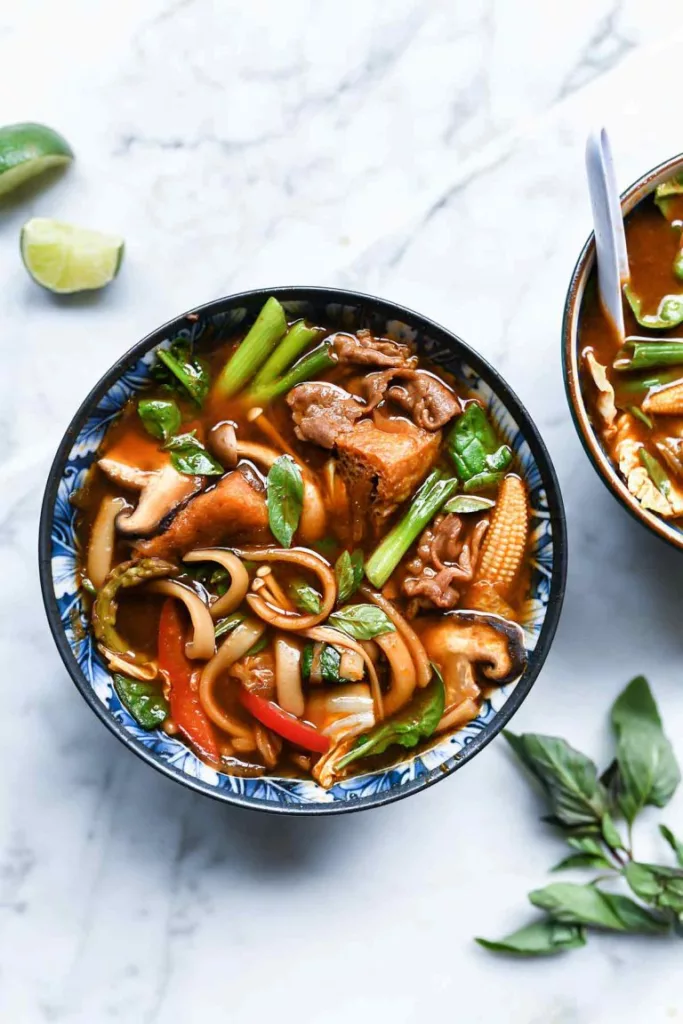
More Recipes You Might Like
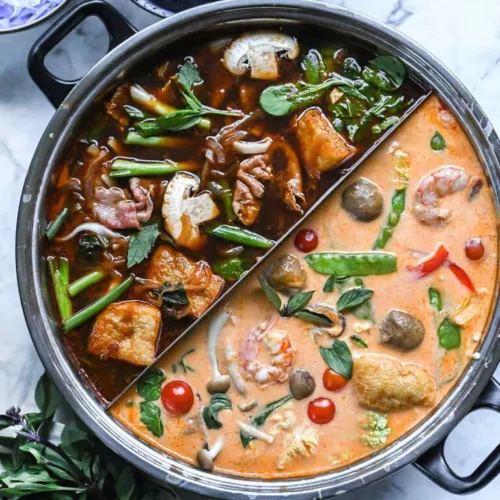
Red Curry Hot Pot Broth
Ingredients
- 2 teaspoons vegetable oil
- 1 large sweet onion thinly sliced
- 2 containers 32 ounces each Kitchen Basics® Original Beef Stock, (8 cups)
- ¼ cup Thai Kitchen® Red Curry Paste
- 2 tablespoons reduced sodium soy sauce
- 1 tablespoon packed light brown sugar
- 1 tablespoon McCormick® Garlic Powder
- 1 teaspoon McCormick® Ginger ground
- 2 tablespoons lime juice
Instructions
- Heat the oil in a 6-quart stockpot over medium-high heat to make the broth. Add onion; cook and stir for 3 minutes or until tender. Add ginger, garlic powder, brown sugar, soy sauce, curry paste, and stock. Heat to a boil. Lower the heat to a simmer for 20 minutes while covered. Just before serving, stir the lime juice into the soup.
- Give visitors the option to customize their meal by arranging meats, veggies, noodles, and garnishes in bowls or on plates.
- Depending on whether you’re serving one broth or two distinct broths, pour broth into one or both sides of the boiling pot when ready to serve. Ladle the broth over rice or noodles once the veggies and meats have been cooked.
- REMEMBER: Pressure cooker or Instant Pot Method
- Method of Multifunction Electric Pressure Cooker (Reduces Cooking Time by One Hour): In the pot of the multipurpose electric pressure cooker, heat the oil on the medium sauté setting (instant pot). Add onion; cook and stir for 3 minutes or until tender. Add ginger, garlic powder, brown sugar, soy sauce, curry paste, and stock. Put on the lid and secure it. Put the pot on high pressure (or soup setting) and cook for 10 minutes. Before opening, release the pressure in the pot and carefully remove the lid. (For details on safe operation, consult the manufacturer’s handbook.) Put the sauté setting on low. Add lime juice and mix. Permit visitors to cook steak in broth for two to three minutes, or until done to their liking. Make each bowl unique, then serve as instructed.
Notes
- Although hot pot is best consumed immediately, you may save any remaining soup and reheat it the next day.
- Please read blog post in its entirety for more tips + tricks.
